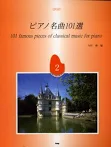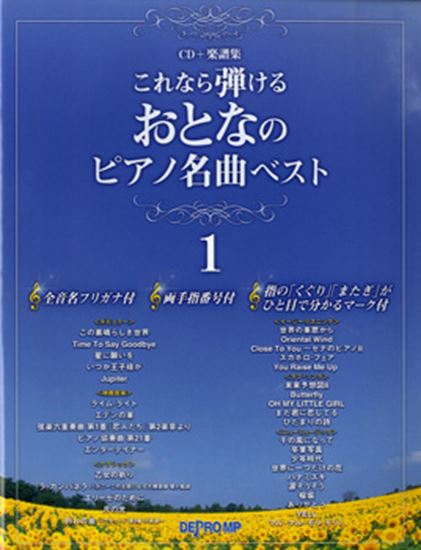Bądarzewska-Baranowska, Tekla : La Prière d'une vierge Es-Dur Op.4
Work Overview
Publication Year:1856
First Publisher:Warszawa
Instrumentation:Piano Solo
Genre:character pieces
Total Playing Time:4 min 50 sec
Copyright:Public Domain
Commentary (2)
Author : Hara, Akiho
Last Updated: March 12, 2018
[Open]
Author : Hara, Akiho
A work composed by the Polish female pianist Tekla Bądarzewska (1834-1861) when she was 22 years old. At the time, it was common for daughters of upper-class families to play the piano in salons, and within such a culture, works that were highly effective in performance yet of accessible difficulty were greatly favored. This work became extremely popular, and in response to its reception, Bądarzewska composed a sequel, The Fulfilled Prayer.
Author : Ooi, Kazurou
Last Updated: March 12, 2018
[Open]
Author : Ooi, Kazurou
Technical Aspects and Musical Variation
Technically, this piece is not particularly difficult, but its greatest challenge lies in how to introduce musical variations. The key consistently remains in E-flat major, without modulation, and only basic triads (I ii6 V I) are used for harmony. Furthermore, each section has repeat markings, leading to further repetitions of the same progression, which necessitates the performer to devise additional ways to vary each section.
Analysis of the Opening (Measures 1-4)
Let's begin by examining the opening. The cadenza in the opening four measures has a forte marking in the first measure and a sforzando in measures 3-4. From the first measure, eight brilliant octaves in both hands follow, settling on the chord in the third measure. Now, regarding these eight octaves, set the goal as the subdominant chord in the third measure and create a direction leading towards it. As a result, for these eight octaves, even if marked forte, it might be better not to play them at full forte, but rather start around mezzo forte and add a crescendo and a slight accelerando towards the goal in the third measure. When playing these eight octaves, avoiding two things will make the performance more listenable:
- Playing with metronomic timing
- Maintaining the same dynamic level throughout
Analysis of the Theme (Measures 5 onwards)
The theme begins in measure 5. It immediately starts with octaves in the right hand; playing the theme in octaves, not just in this piece, tends to make the melodic line stiff. Half the volume of a single melody line is sufficient, so please be very careful with the volume. Next, regarding the melodic shaping: the melody in this piece always ascends with arpeggios and descends with scales. Aim to increase the volume towards G, the melody note on the third beat of measure 5, and once G is reached, decrease the volume towards C, the final note of the melody in measure 6. Measures 7-8 follow the same manner, but should be played more gently than measures 5-6.
Handling Repetitions (Measures 13-28)
Once these basic shapings and directions are established, they can be applied to each variation and played similarly. However, a significant challenge, for instance, is how to handle measures 13-28. Measures 13-28 are divided into two sections: 13-20 and 21-28. However, it becomes apparent that these two sections are identical, except for the final measure. Furthermore, each section has a repeat. This means the same material is repeated almost four times, requiring the performer to employ considerable ingenuity. Aim for a performance where these four repetitions are not identical, by varying expression, dynamics, articulation, and other elements.
Later Sections (Measures 29 onwards)
Measure 29 evokes the image of a male tenor singer rather than a maiden. Therefore, the melody should be brought out clearly with marcato. From measures 37-52 onwards, it returns to the maiden-like character, but with the addition of trills. This further enhances the brilliance, so a lively performance is desirable. And the final Coda begins in measure 53 and ends in measure 60, with the marking 'piu allegro'.
Overall Interpretation
Analyzing it this way reveals that the emotional intensity of this piece gradually builds from the beginning to the end, particularly as it progresses into the latter half. Therefore, performers should keep this in mind, introduce gradual variations, and try to guide listeners progressively towards the final Coda, maintaining tension and ensuring the performance is never boring. On a personal note, I believe the repeats in each section may be omitted.
PTNA & Partner Channel Videos(4items)
Sheet MusicView More
Scores List (89)

(株)ヤマハミュージックエンタテインメントホールディングス

(株)全音楽譜出版社

(株)ドレミ楽譜出版社

(株)全音楽譜出版社

(株)シンコーミュージックエンタテイメント

(株)ドレミ楽譜出版社

(株)全音楽譜出版社

(株)全音楽譜出版社

(株)全音楽譜出版社

(株)全音楽譜出版社

(株)ドレミ楽譜出版社

(株)ドレミ楽譜出版社

(株)音楽之友社

KMP(ケイ・エム・ピー) ケイエムピー

(株)サーベル社

ミュージックランド

(株)ヤマハミュージックエンタテインメントホールディングス

(株)ドレミ楽譜出版社

ハンナ(ショパン)

ミュージックランド

ミュージックランド

(株)ドレミ楽譜出版社

ミュージックランド

(株)シンコーミュージックエンタテイメント

(株)ドレミ楽譜出版社

(株)シンコーミュージックエンタテイメント

ミュージックランド

(株)シンコーミュージックエンタテイメント

(株)ドレミ楽譜出版社

(株)学研プラス

ミュージックランド

KMP(ケイ・エム・ピー) ケイエムピー

(株)タイムリーミュージック

ミュージックランド

(株)ドレミ楽譜出版社

(株)ドレミ楽譜出版社

(株)シンコーミュージックエンタテイメント

ミュージックランド

ミュージックランド

ミュージックランド

(株)シンコーミュージックエンタテイメント

(株)シンコーミュージックエンタテイメント

(株)共同音楽出版社

(株)リットーミュージック

(株)ドレミ楽譜出版社

(株)ドレミ楽譜出版社

(株)ドレミ楽譜出版社

(株)ヤマハミュージックエンタテインメントホールディングス

ハンナ(ショパン)

(株)ドレミ楽譜出版社

(株)シンコーミュージックエンタテイメント

(株)シンコーミュージックエンタテイメント

(株)ドレミ楽譜出版社

KMP(ケイ・エム・ピー) ケイエムピー

(株)シンコーミュージックエンタテイメント

ハンナ(ショパン)

ハンナ(ショパン)

(株)ドレミ楽譜出版社

ハンナ(ショパン)

(株)ヤマハミュージックエンタテインメントホールディングス

KMP(ケイ・エム・ピー) ケイエムピー

KMP(ケイ・エム・ピー) ケイエムピー

デプロMP

(株)タイムリーミュージック

ハンナ(ショパン)

(株)ヤマハミュージックエンタテインメントホールディングス

(株)ヤマハミュージックエンタテインメントホールディングス

(株)ドレミ楽譜出版社

(株)シンコーミュージックエンタテイメント

(株)共同音楽出版社

デプロMP

(株)シンコーミュージックエンタテイメント

ミュージックランド

(株)全音楽譜出版社

ミュージックランド

ミュージックランド

(株)シンコーミュージックエンタテイメント

KMP(ケイ・エム・ピー) ケイエムピー

(株)ドレミ楽譜出版社

ミュージックランド

(株)ヤマハミュージックエンタテインメントホールディングス

(株)全音楽譜出版社

(株)ヤマハミュージックエンタテインメントホールディングス

(株)ヤマハミュージックエンタテインメントホールディングス

(株)学研プラス

カワイ出版









